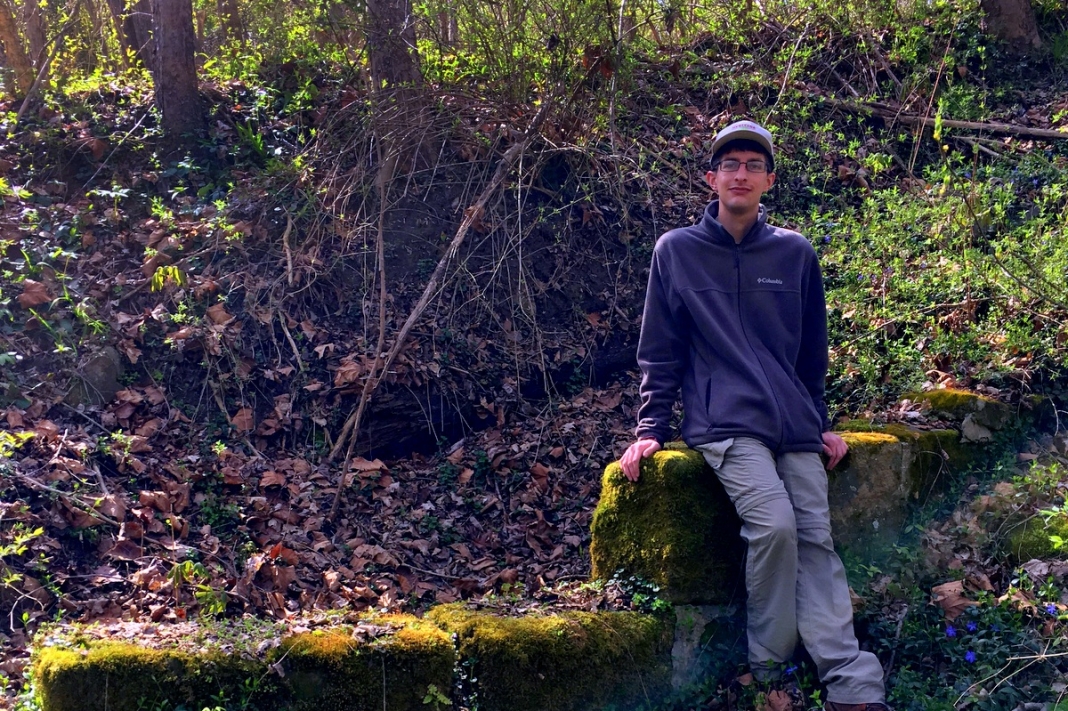ONA, W.Va. — In a nondescript woodland along US-60 (with a modern concrete bridge looming in the background) lies the site of what was once a major tourist attraction in the pleasant valley east of Huntington, West Virginia.
On an overgrown patch of hillside, ruins remain of a luxury spa and resort that once drew visitors from near and far who sought relief and relaxation during the late nineteenth century. They came in pursuit of the sulfurous blue waters that emanated from the site.
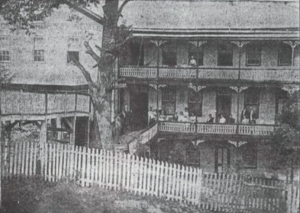
For centuries, it was long believed that mineral and thermal springs possessed medicinal properties. Warm water from deep underground, rich in minerals, upwelled to the surface in select locations.
Due to their varying chemical compositions, water from these wells could have many different colors, smells, and tastes. Drinking or bathing in these strange waters, people thought, could cure, or at least temporarily alleviate, a wide variety of illnesses.
By the 19th century, many such springs in the hills of Appalachia were developed into spas and resorts for those with means. Politicians, military officers, businessmen, and plantation owners commonly took extended vacations at the springs to treat their ailments and relax in the quiet countryside settings. The elite flocked to present-day West Virginia, where resorts sprang up around places such as Berkeley Springs, Sweet Springs, Salt Sulphur Springs, White Sulphur Springs, and Red Sulphur Springs.
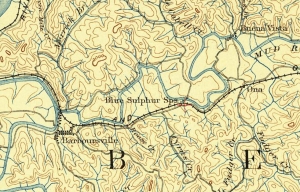
Among these was the Blue Sulphur Springs Hotel in Cabell County, not to be confused with the more famous Blue Sulphur Springs Resort in Greenbrier County. This spring of sulfurous blue water was located near the banks of the Mud River at present-day Ona.
At the time, it was a remote and sparsely populated agricultural community. The James River & Kanawha Turnpike traveled through the area along where US-60 is today. While the spring’s existence had been known for years, it received little significant attention or use.
The construction of the C&O Railway, however, created new opportunities for tourism. In 1883, an enterprising man named George J. Floding purchased the land that encompassed the spring and constructed the Floding Springs Hotel. Two years later, he expanded the building, adding a third story, and renamed it the Blue Sulphur Springs Hotel. It reopened with a lavish reception on the Fourth of July 1885.
The hotel was a luxurious, wood-frame, gabled ell structure with 35 rooms and a veranda on the third floor. It was built along the hillside, so the second story was level with the road. Passenger trains stopped 150 feet from the main entrance. Visitors could disembark and quickly walk straight to the hotel, entering through the second floor.
Guests at the hotel could enjoy fancy dinners, balls, croquet games, walking trails, and the eponymous Blue Sulphur Springs. Floding reportedly installed a pump system so the Mud River could not mix with the mineral water.
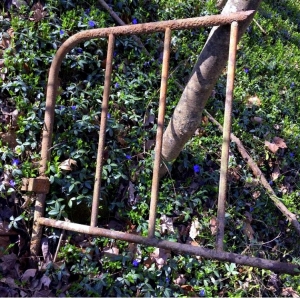
Despite its allure, the Blue Sulphur Springs Hotel struggled to remain profitable throughout its existence. In 1902, the West Virginia Colored Orphans Home attempted to buy the facility but could not raise enough money. In 1909, the C&O relocated their tracks to the opposite side of the Mud River. Devastated by this traffic loss, George Floding closed the hotel a year later.
Around 1923, the hotel was purchased by Don Chafin, the infamous sheriff of Logan County who battled against union coal miners at the Battle of Blair Mountain in 1921. Chafin tasked his brother-in-law Walter Frazier with operating the business. This being the era of Prohibition, rumors circulated that the hotel served alcohol under the table.
A writer in the July-August 1927 issue of West Virginia Wild Life magazine described Frazier and his family as champion bait casters, having won bait casting competitions in Orlando, Florida. However, the Fraziers were not champion hotel operators, and Blue Sulphur Springs closed for good shortly afterward.
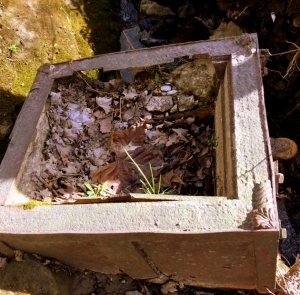
New owners purchased the hotel in 1959 but demolished it sometime in the 1960s. A two-lane bridge was constructed over the Mud River and adjacent to the property in 2000, permanently altering the landscape. In a subtle nod to local history, the West Virginia State Legislature named it the George Adam Floding Bridge in honor of the hotel’s founder.
The exact location of the hotel site is on the hillside to the immediate west of the George Adam Floding Bridge between US-60 and the Mud River. The only physical remnant of the building is a tiny sliver of the foundation, consisting of three or four moss-covered cut stones. Some artifacts can be spotted around the site, uncovered by erosion and the shifting earth. These include a safe, metal pipes and bed frames, bits of shattered porcelain, and slate.
One thing noticeably absent from the Blue Sulphur Springs Hotel site is the spring itself. In 2015, a geography student from Marshall University surveyed the area to determine the location and condition of the spring. The results were inconclusive and pinpointed where the spring should have been, though no visual evidence was apparent.
The spring was likely filled in during either the hotel’s demolition in the 1960s or the new bridge’s construction in 2000. All that remains of Cabell County’s Blue Sulphur Springs now are a few stones, scattered debris, and fading memories.
Map showing ruins of Blue Sulphur Springs Hotel, West Virginia
Google Map location: 38.418775267191414, -82.23860167350304. The property is owned by Blue Sulphur Springs LLC of Pittsburgh.
Sign up to receive a FREE copy of West Virginia Explorer Magazine in your email weekly. Sign me up!
